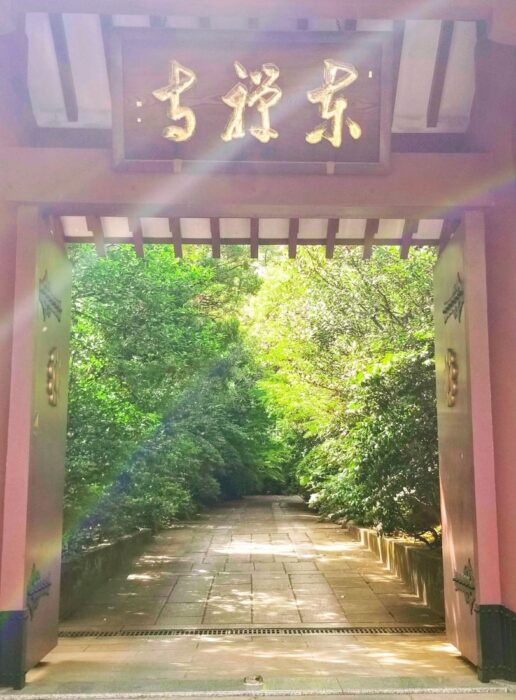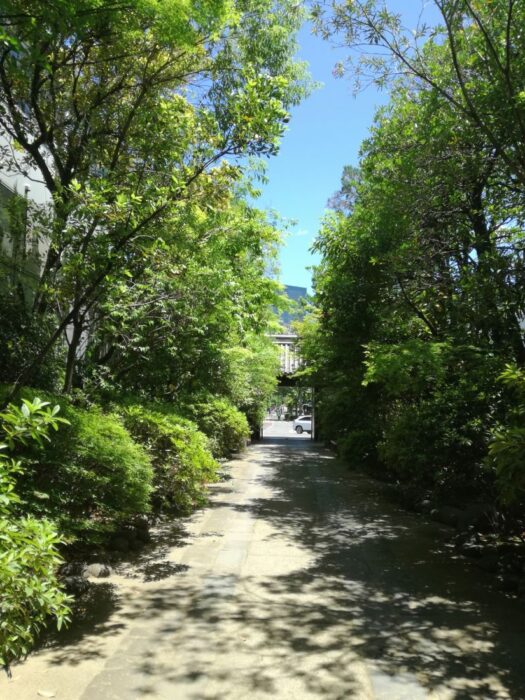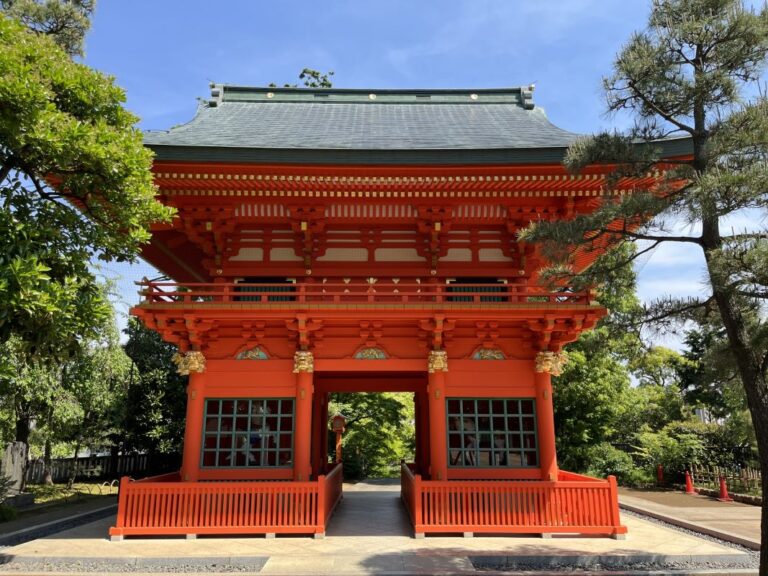Tozenji Temple is a beautiful Buddhist temple in Takanawa, Tokyo. Founded in 1609, the temple has a rich history and is famous for two bloody incidents that occurred during the Late Edo Period. Although the temple is now inland due to land reclamation projects, it once faced the sea and provided a serene view for visitors.

The temple’s architecture is a beautiful blend of traditional Japanese and Chinese styles, with a stunning gate and a beautiful garden that you can explore.
Visitors to Tozenji Temple can learn about its history and significance, as well as take part in traditional Buddhist practices such as meditation and prayer.
History

Tozenji Temple is a historic temple in Takanawa, Minato-ku, Tokyo. It was founded in 1609 by the priest Tenkai, who was a close advisor to the Tokugawa shogunate. Although the temple is now inland, it originally faced the sea, and its location made it an important stop for travelers and pilgrims.
Founding of Tozenji Temple

According to legend, the temple was built on the site of a former fortification that was used to defend the area against pirate attacks. The temple was named “Tozenji” by the Tokugawa shogunate, which means “temple of the eastern good.” It was built in the Soto Zen style of Buddhism, which emphasizes meditation and self-reflection.
Over the years, the temple has undergone renovations and additions, including the addition of a bell tower and a pagoda. Today, it is one of the few remaining examples of Edo period architecture in Tokyo.
Significance of Tozenji Temple in Japanese History
Tozenji Temple played an important role in Japanese history, particularly during the Late Edo Period. In 1859, the first British consulate general was housed in the temple, which marked the beginning of diplomatic relations between Japan and Britain.
However, the temple is perhaps most famous for two bloody incidents that occurred in the Late Edo Period. In 1861, a group of anti-western samurai attacked the British legation that was housed in the temple, which led to a violent confrontation that left people dead. Two years later, the temple was attacked again by a group of anti-western samurai, which led to another violent clash.
Despite these incidents, Tozenji Temple remains an important cultural and historical landmark in Tokyo. You can explore the temple grounds, which include a beautiful garden, a cemetery, and historic buildings.
Architecture and Design
Main Hall
The Main Hall of Tozenji Temple is a stunning example of traditional Japanese architecture. The hall features a curved, tiled roof and is supported by wooden pillars. Inside, visitors will find a large statue of the Buddha, as well as smaller statues of bodhisattvas and other figures from Buddhist mythology.
Pagoda & Decorations

Tozenji Temple is home to a number of exquisite works of art and decorations. One of the most notable is the three-story pagoda, which stands at the entrance to the temple grounds. The pagoda is adorned with intricate carvings and features a striking red and white color scheme. Inside the Main Hall, you can admire a number of beautiful paintings and calligraphy works, many of which date back centuries.
Gardens

You can stroll along winding paths that lead past carefully tended trees, shrubs, and flowers. A garden is a great place for some shade during the summer and there are a number of stone lanterns and other decorative elements.
Visiting Tozenji Temple
Location and Hours of Operation
Tozenji Temple is in the Takanawa area of Tokyo, Japan. It is easy to get to, with the nearest station being Sengakuji Station on the Toei Asakusa Line. The temple is open daily from 9:00 am to 4:30 pm, and admission is free.
What to Expect During Your Visit
Upon entering the temple grounds, visitors will be greeted by a peaceful and serene atmosphere. The temple features a traditional Japanese garden, complete with a koi pond and small bridges. Visitors are encouraged to take their time and explore the grounds at their leisure.
Inside the temple, visitors will find a main hall where they can offer prayers and pay their respects to the Buddha. The hall is adorned with intricate wood carvings and beautiful artwork.
Where To Stay In Tokyo
Tokyo visitor levels are currently at an all-time high so make sure to book your hotels early. Tip most hotels booked with booking.com have free cancelation so book as soon as you know your date and you can always cancel if you change your mind.






